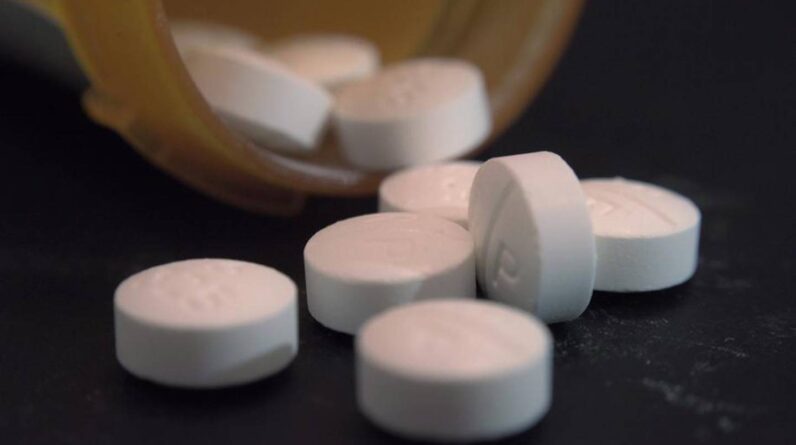
BOSTON — Boston saw a 7 percent increase in fatal overdoses by 2022, with fentanyl seen as a key factor in the increase in deaths, city public health officials said Wednesday.
According to the new data published by the Massachusetts Department of Public Health, 352 people died of opioid overdoses in Boston in 2022, compared to 330 deaths in 2021.
From 2019 to 2022, Boston saw a 36 percent increase in opioid-related deaths, more than double the statewide rate of increase of 16 percent over the same time period.
A key factor in that increase is the role of fentanyl, a highly potent synthetic opioid, implicated in more than 90 percent of opioid-related deaths statewide and among Boston residents by 2022, officials say of public health of the city.
Xylazineknown as “tranq,” an animal tranquilizer has also increasingly found its way into the drug supply and increases the risk of overdose through oversedation, officials said.
“This ongoing tragedy requires an increased focus on overdose prevention across our city,” Boston Public Health Commissioner Dr. Bisola Ojikutu said in a statement Wednesday. “We must respond by expanding evidence-based interventions that reduce the harm associated with drug use and keep people alive. We must also address widespread inequalities and ensure that prevention, care and treatment that save lives are available to all.”
The 2022 data shows that opioid-related overdoses disproportionately affected black and Latino individuals in Boston, officials said. Of all opioid overdose deaths in Boston, 30 percent were among black individuals and 21 percent among Latino individuals.
From 2021 to 2022, opioid overdose deaths among black people in Boston increased by 29 percent and deaths among Latino people increased by 9 percent.
From 2020 to 2022 combined, the average annual opioid overdose death rate for black and Latino residents was 66 percent and 31 percent higher than white residents, respectively.
The overdose death rate for black residents from 2020 to 2022 is a 130% increase over the rate seen from 2017 to 2019.
Data compiled by the Boston Public Health Commission in its recent Health of Boston report show that the leading cause of premature death among black and Latino male residents between 2017 and 2021 combined was accidents, and opioid overdoses accounted for the majority of those deaths.
“These data emphasize the need for greater attention to equitable access to harm reduction prevention and treatment services in Boston,” the Boston Public Health Commission said in a statement.
“BPHC and the City of Boston remain committed to responding to this crisis in collaboration with state, clinical and community partners through a public health approach that expands access to life-saving treatments, disease-reducing services harm, prevention and recovery support,” he stated. said “In addition to providing harm reduction tools such as syringes and safe smoking supplies, BPHC’s AHOPE (Access, Harm Reduction, Overdose Prevention and Education) program provides drug testing services to drug users to identify the presence of fentanyl, xylazine or other substances”.
Access to treatment services is also available through the Providing Access to Addiction Treatment, Hope and Support (PAATHS) program by calling 1-855-494-4057. Anyone in the city of Boston can call 311 at any time to access treatment or care services.
Expanding access to Narcan (naloxone) is another critical aspect of the overdose response, officials said.
The Boston Public Health Commission distributed nearly 15,000 doses of Narcan to residents and community partners in 2022, and outreach workers will reverse up to five overdoses a day.
Boston EMS responded to 4,245 narcotics-related incidents in 2022 and administered Narcan to 2,181 patients.
“These heroic actions not only save lives, but also help build very important relationships with customers that help engage and link them to services,” the statement said. Naloxone is available without a prescription at pharmacies in Massachusetts. Offered by municipal public health officials free training on how to respond to overdoses and administer naloxone.
In 2022, the city’s public health commission began funding two day spaces in Roxbury and Back Bay “that serve as safe environments where people can connect with clinical care and services and get meals, basic services and build trust with our suppliers.” said the statement.
“As more and more people come to Boston for treatment and resources, BPHC and the city support Governor Healey’s commitment to increase harm reduction capacity in cities and towns across the Commonwealth,” said the Boston Public Health Commission.
Public health officials urged Bostonians to “be alert” for signs of overdose among local residents. Common signs of an opioid overdose include slow breathing, blue lips, and unresponsiveness.
Anyone who encounters a person who may be overdosing is asked to immediately call 911, perform rescue breaths and administer naloxone, public health officials said.
This is a developing story. Check back for updates as more information becomes available.
Download the FREE Boston 25 News app for breaking news alerts.
Follow Boston 25 News at Facebook i Twitter. | Watch Boston 25 News NOW
©2023 Cox Media Group
[ad_2]
Source link





